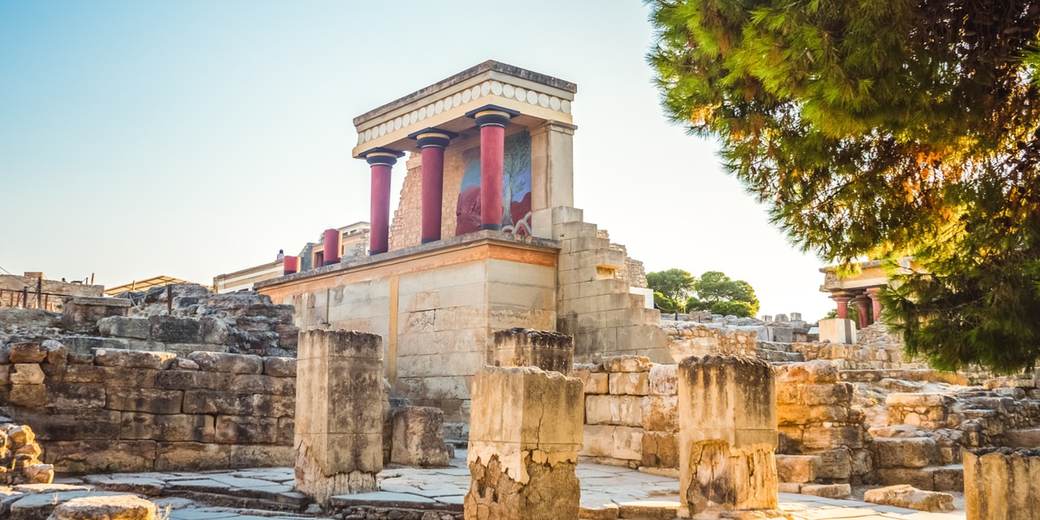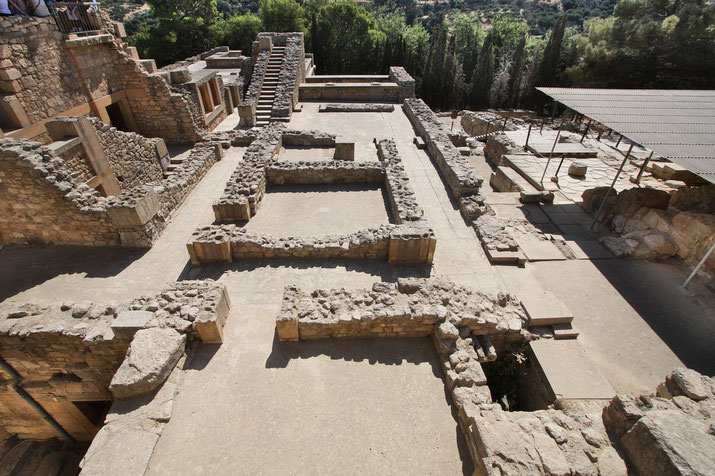Arthur Evans and controversial rediscovery of the lost Minoan civilization

Hidden beneath the sun-kissed landscape of Crete, a forgotten civilization lay waiting to be uncovered.
It wasn't until the turn of the 20th century that a tenacious British archaeologist named Arthur Evans would unearth the secrets of a lost world, bringing the ancient Minoan civilization to light.
Evans' groundbreaking discoveries at the Palace of Knossos not only transformed our understanding of Europe's first advanced civilization, but also set new standards in archaeological research.
Who was Arthur Evans?
Arthur Evans (1851-1941), a British archaeologist and historian, is widely celebrated for his groundbreaking discoveries of the ancient Minoan civilization and the excavation of the Palace of Knossos on the island of Crete.
His work has significantly contributed to our understanding of the Bronze Age in the Mediterranean, shedding light on a previously unknown civilization that predates ancient Greece.
Early life and career
Born on July 8, 1851, in Nash Mills, England, Arthur Evans was the son of Sir John Evans, a renowned archaeologist and geologist.
Arthur developed an interest in archaeology and history at an early age, likely influenced by his father's work.
He was educated at Harrow School and later graduated from the University of Oxford with a degree in modern history.
After completing his studies, Evans embarked on a career as a journalist, which allowed him to travel extensively throughout the Balkans.
This experience sparked his interest in the region's ancient history and languages. In 1884, Evans was appointed the curator of the Ashmolean Museum at the University of Oxford, where he began to study ancient scripts and artifacts.
Rediscovering the Minoans
In 1894, Evans encountered a series of ancient seal stones from Crete, which featured a script he believed to be older than the Greek alphabet.
Convinced that these artifacts were evidence of a lost civilization, he set out to find their origin. In 1900, he began excavations on the island of Crete, focusing on the site of Knossos.
During his excavations, Evans discovered the ruins of a massive palace complex, which he believed to be the center of the ancient Minoan civilization.
The site featured a labyrinthine network of rooms, corridors, and staircases, which inspired him to name it the Palace of Knossos.
Evans was captivated by the exquisite frescoes and artifacts he found at the site, which indicated that the Minoans were a highly advanced civilization with a rich cultural heritage.
Who were the Minoans?
The Minoans were an ancient civilization that thrived on the island of Crete during the Bronze Age, approximately from 2600 BCE to 1100 BCE.
Named after the mythical King Minos, the Minoan civilization is considered the first advanced civilization in Europe.
The Minoans were renowned for their advanced architecture, art, and maritime trading capabilities.
They were skilled artists, creating vibrant frescoes, pottery, and intricate metalwork. Their maritime prowess enabled them to establish trade networks throughout the Mediterranean, contributing to their prosperity and cultural exchange with neighboring civilizations.

Mysterious Linear A and B scripts
Evans' most significant discovery at Knossos was the ancient scripts found on clay tablets.
He named these scripts Linear A and Linear B, designating them as two distinct writing systems.
Evans dedicated much of his life to deciphering these scripts, but it was not until after his death that Linear B was successfully deciphered by Michael Ventris, revealing it as an early form of the Greek language.
Linear A, however, remains undeciphered to this day.
The Minoan controversies
While Arthur Evans made significant contributions to archaeology and the understanding of the Minoan civilization, his work has been subject to several controversies.
Critics argue that some of Evans' interpretations of the Minoan civilization were influenced by his personal beliefs and the cultural biases of his time.
For instance, he viewed the Minoans as a peaceful, matriarchal society, which may have been based more on his personal ideals than on concrete evidence.
In the same way, there have been criticisms of his reconstruction work at the Palace of Knossos, since he relied so much on concrete and other modern materials.
These reconstructions were often speculative and based on his interpretations of the Minoan culture.
As a result, some of the reconstructed areas of the site may not accurately represent the original architecture or designs.
This has led to criticism from some archaeologists and historians who argue that the reconstructions can be misleading or distort our understanding of the Minoan civilization.
Also, some critics have raised concerns about the methods used by Evans to preserve and restore artifacts discovered during his excavations at Knossos.
Certain techniques applied at that time, such as using wax and other substances to preserve frescoes, have since been considered inappropriate, potentially causing long-term damage to the artifacts.
Significance and legacy
Evans' work has also had a significant impact on the fields of archaeology and history. His meticulous methods and dedication to preserving the context of his discoveries have set new standards for archaeological research.
The Palace of Knossos remains an essential site for understanding the history of the Mediterranean, and Evans' work continues to inspire new generations of archaeologists and historians.
What do you need help with?
Download ready-to-use digital learning resources
Copyright © History Skills 2014-2025.
Contact via email
With the exception of links to external sites, some historical sources and extracts from specific publications, all content on this website is copyrighted by History Skills. This content may not be copied, republished or redistributed without written permission from the website creator. Please use the Contact page to obtain relevant permission.





